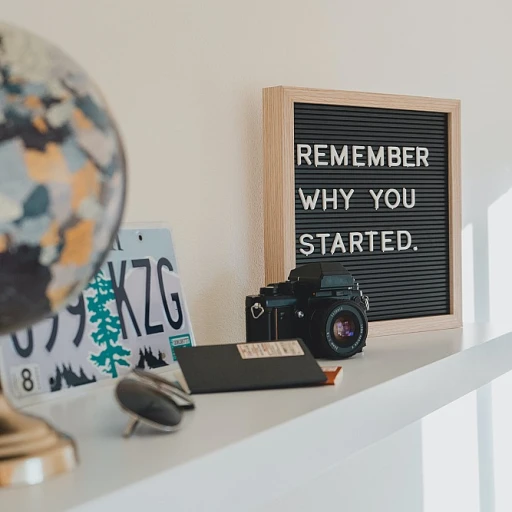
Understanding the Role of Visual Aids in Workshops
The Influence of Visual Stimuli in Corporate Settings
In the fast-paced world of business, where time is often a crucial resource, enhancing communication and understanding is key. Visual aids play a significant role in achieving this goal, especially within corporate workshops. They help to break down complex concepts into more digestible forms, making it easier for team members to grasp new information. The use of visual aids like cards can be particularly transformative. Cards, as part of a well-designed set, can facilitate teamwork and foster a more interactive environment. For instance, pip decks can serve as powerful conversation starters, igniting discussions and ensuring that every team member has a chance to contribute meaningfully. Moreover, digital tools have redefined the workshop landscape. With products such as business cards and card decks available for download and print, businesses can tailor their resources to meet specific needs. This adaptability can drive engagement and enhance the overall effectiveness of workshops. Visual aids are not just about aesthetics; they create a great impact on how valuable information is perceived and retained. Think of these aids as the business cards of knowledge – they are designed to leave a lasting impression. Reports suggest that when people see ideas represented visually, their comprehension and retention improve significantly, paving the way for more effective decision-making processes. For those looking to enhance their workshop tactics with visual aids, understanding the role these tools play is crucial. By integrating instruments like sports cards or trading card sets, teams can embark on a creative journey that enriches their professional experience and boosts performance. Whether it's through a card deck designed to stimulate creativity or a set of value cards used for team building, the power of visual aids cannot be underestimated. To delve deeper into crafting impactful presentations, discover more techniques to elevate your workshops and ensure they are both effective and engaging.The Power of Value Cards in Team Building
Unlocking Team Potential with Value Cards
In the realm of corporate workshops, the use of value cards has emerged as a powerful tool for team building. These cards are not just simple pieces of paper; they are thoughtfully designed tools that help teams explore and articulate their core values. By facilitating meaningful conversations, value cards can transform a group of individuals into a cohesive unit.
One of the key benefits of using value cards in team building is their ability to serve as conversation starters. When team members are encouraged to discuss what each card represents to them, it opens up a dialogue that might not occur in a typical business setting. This process helps to break down barriers and build trust among team members.
Moreover, value cards can be used to create a shared understanding of what the team stands for. By collectively identifying and agreeing on core values, teams can align their efforts towards common goals. This alignment is crucial for enhancing productivity and ensuring that everyone is working towards the same objectives.
Value cards also offer a unique way to engage team members who might be more reserved. The visual and tactile nature of the cards can draw in participants who might not typically engage in verbal discussions. This inclusivity ensures that all voices are heard, making the team stronger and more united.
Incorporating value cards into your workshop tactics can be a game-changer. Whether you're in the United States or elsewhere, these cards can be a great addition to your toolkit. They provide a structured yet flexible approach to team building, allowing for creativity and spontaneity within a guided framework.
As you start to integrate value cards into your workshops, consider how they can complement other visual aids and techniques. The synergy between different tools can amplify their impact, creating a more dynamic and engaging experience for all participants.
Enhancing Decision-Making with Value Cards
Boost Decision-Making Processes with Creative Tools
Incorporating value cards into your workshop arsenal is an effective way to stimulate decision-making in a way that is both engaging and insightful for team members. By using these tools, teams are guided through a structured approach that encourages them to consider different aspects of a decision or a problem, thereby leading to more comprehensive and thoughtful outcomes.
Value cards act as powerful conversation starters that help clarify priorities and values within the team. This clarity is essential when striving to make decisions that align with both individual and organizational goals. The card deck serves as a tangible product that provides team members with the chance to reflect on core values, enabling them to approach decisions with a sense of purpose and direction.
In the context of business, participants can use the cards to create scenarios or simulate decision paths. A well-designed set of card decks, like those offered by Pip Decks, provides not only a physical touchpoint but also a framework to engage teams in meaningful discussions that emphasize practical outcomes.
Additionally, data from a case study demonstrated that teams that regularly utilize visual aids, such as value cards, report a higher level of satisfaction with decisions made during workshops. This method encourages participants to vocalize their insights, fostering an inclusive and collaborative workshop environment where sports card-style exchanges promote quick thinking and empathy among team members.
The tangible nature of value cards offers a great alternative to traditional digital tools, providing an opportunity to shift focus from screens to people during crucial decision-making phases. When teams initiate their sessions with the right mindset and resources, they set the stage for success, optimizing both the time and the quality of the discussions at hand. This makes the use of value cards not just a preferred choice for many organizations in the United States, but a must-have in any ambitious workshop toolkit.
Capturing Moments: The Importance of Photos in Workshops
Preserving Workshop Dynamics Through Photography
Incorporating photography into corporate workshops can significantly enhance the overall experience and effectiveness of the session. Capturing moments during these events not only serves as a visual record but also helps in reinforcing the key messages and outcomes achieved. Photos taken during workshops can be used to create a compelling narrative that reflects the journey of the team, highlighting the use of value cards and other visual aids.
Photography in workshops can serve multiple purposes:
- Documentation: Photos provide a visual documentation of the workshop, capturing the interactions and activities of team members. This can be particularly useful for creating reports or presentations post-workshop.
- Engagement: Sharing photos on social media platforms can increase engagement and showcase the company’s commitment to team building and professional development.
- Reflection: Reviewing photos after the workshop allows participants to reflect on the experience, recalling the discussions and decisions made, which can reinforce learning and development.
When using photography in workshops, it’s important to consider the design and layout of the photos. A well-curated set of images can be a great tool for storytelling, illustrating the progression of the workshop and the impact of tools like value cards. Additionally, ensuring that all team members are included in the photos fosters a sense of unity and inclusion.
For businesses looking to enhance their workshop tactics, integrating photography can be a valuable addition. It not only captures the essence of the event but also serves as a powerful reminder of the collective efforts and achievements of the team. As with value cards, photos can become a part of the workshop’s legacy, offering insights and inspiration for future sessions.
Practical Tips for Using Value Cards Effectively
Making the Most Out of Your Value Cards
To transform your corporate workshop into an engaging and productive session, effectively using value cards is essential. Drawing from their functionality as powerful tools in team exercises, here are some tips to maximize their impact:- Thoughtful Preparation: Before starting your session, ensure you have a well-designed card deck that aligns with your workshop objectives. Whether your purpose is team building or exploring business goals, a set of value cards tailored to the needs of your team guarantees a smoother process.
- Structure Your Session: Allocate time wisely for each section of your workshop. Designing a clear roadmap that incorporates value card activities will lead to better insights and smoother transitions. Using a timer can help manage discussions and maintain focus.
- Encourage Participation: Foster an environment where all team members feel comfortable expressing their thoughts. Value cards can act as great conversation starters, encouraging quieter participants to engage in the dialogue. Ensuring everyone has the opportunity to share will enhance the team's bonding and the overall experience.
- Integrate Digital Solutions: In our digital world, combining physical cards with digital versions can enhance accessibility and engagement. Options to download print versions or integrate digital value card sets can cater to remote teams or tech-savvy participants.
- Facilitate Reflection: After the workshop, ask participants to reflect and report on the insights they've gained. This reflection, combined with photos capturing key moments, bridges the gap between conversation and action, providing tangible takeaways for your team.
Case Studies: Success Stories of Value Cards in Action
Real-World Applications of Value Cards
Value cards have shown their effectiveness in various settings, from small team gatherings to large organizational workshops. When implemented correctly, these cards can significantly alter team dynamics and decision-making processes. Here are some examples showcasing the success of value cards across different business contexts:
- Team Building Workshops in Tech Startups: Tech startups in the United States often face challenges related to rapid team expansions and dynamic work environments. Incorporating value cards during team building exercises helps new team members understand core values and align their goals with the company's mission. The engaging design of value cards makes them great conversation starters, encouraging open dialogue and fostering collaborative spirits among team members.
- Enhancing Product Design Discussions: In the world of product development, teams often rely on value cards to prioritize projects and ideas. Cards are used to signify the importance of certain design elements or features. As a result, teams can quickly identify what holds the most value and where to allocate resources, thus streamlining the decision-making process.
- Sports Team Strategy Meetings: Sporting organizations have adopted value cards as a tool for strategy sessions. Much like trading cards or sports cards, these decks offer a tangible element to otherwise conceptual strategies. Coaches and players use the cards to set strategic priorities, ensuring that every team member understands their role in achieving a collective goal.
- Corporate Training and Skill Development: Organizations utilize value cards to enhance training workshops, as they provide a structured approach to discussing key work principles and values. By employing a set of cards, trainers can create interactive and memorable sessions that prompt employee engagement and improve retention of critical business concepts.
From tech to trading cards, the versatility of value cards is evident. They serve as effective tools not only for enhancing team dynamics but also for advancing strategic, product, and training objectives across various organizational structures.











